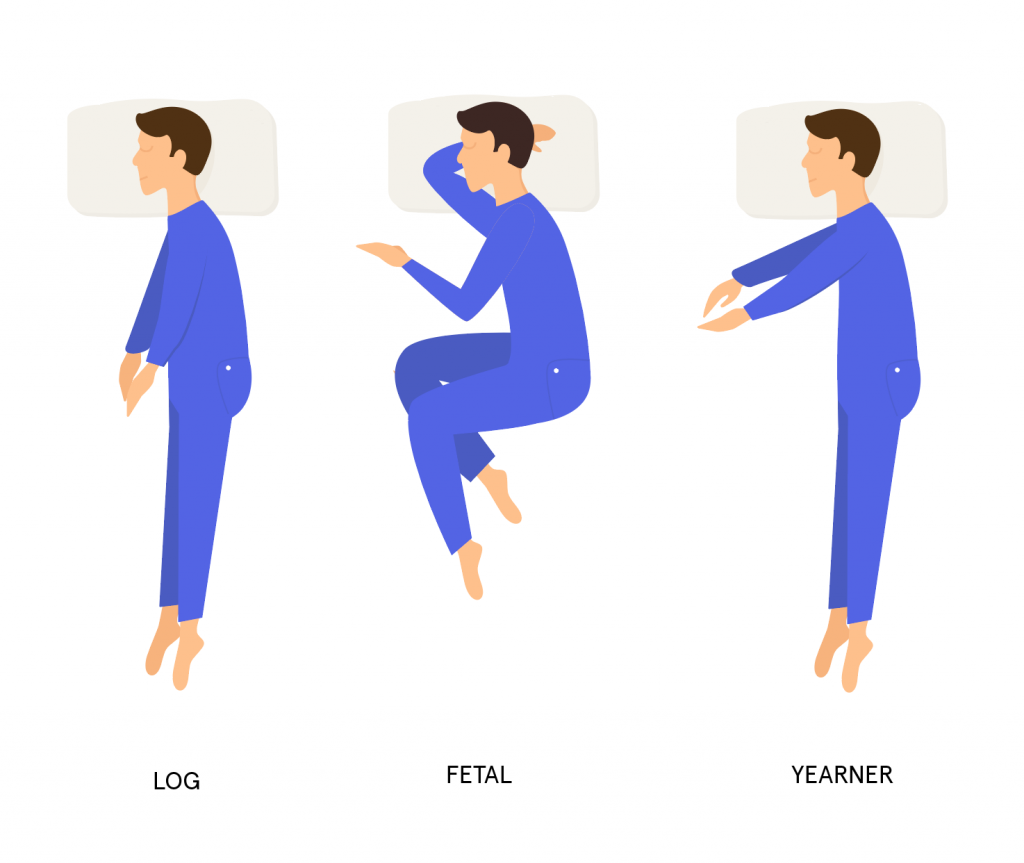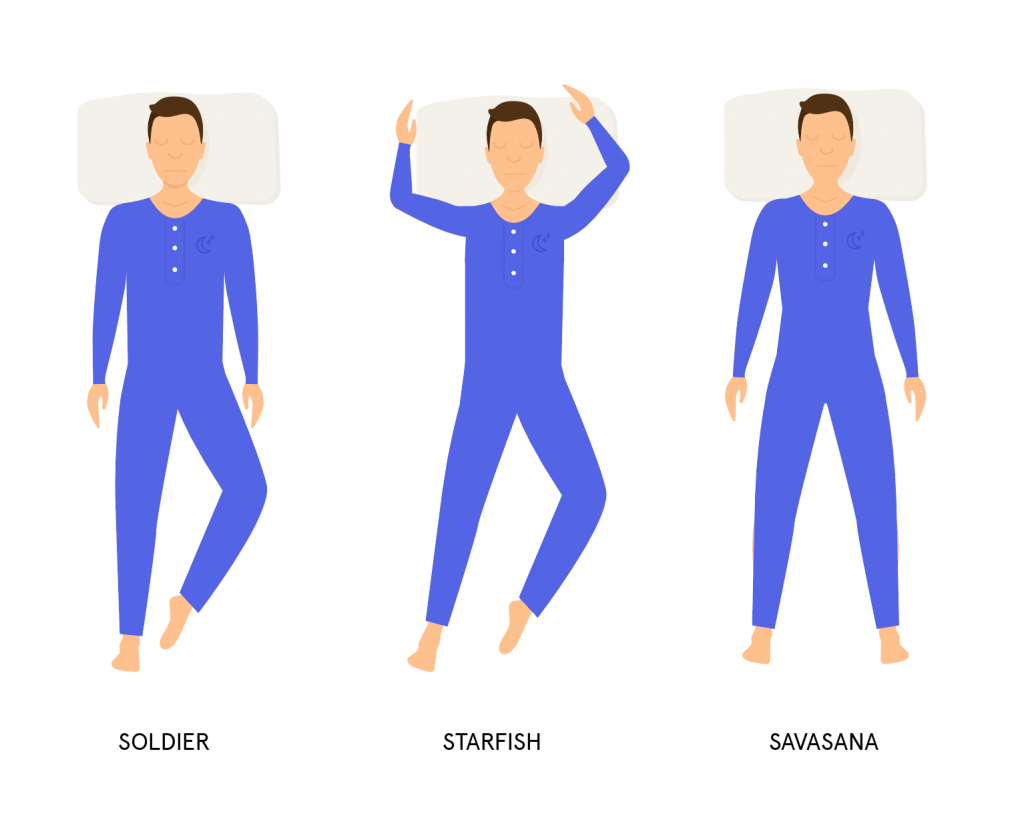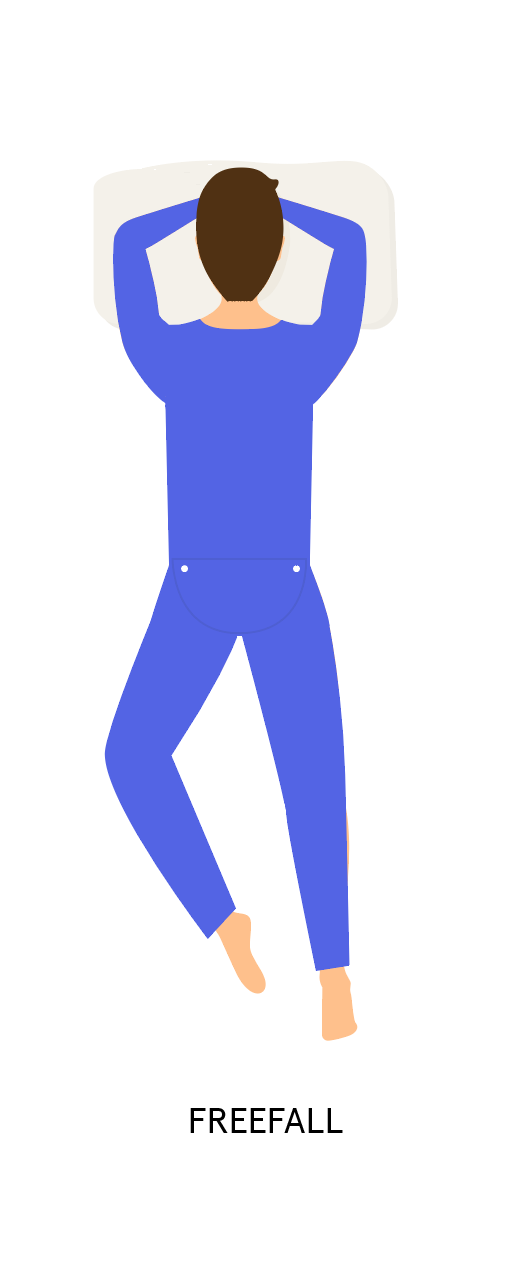What is the best sleep position?
Does your sleep position actually matter? Turns out, yes.
It’s probably no surprise that your sleep position can affect the quality of your sleep, but you may be surprised that it can affect other areas of your life. Your sleep position can cause back and neck pain, heartburn – even wrinkles and breast sag.
Your preferred sleep position is the one you get in in order to fall asleep each night. However, it doesn’t mean you stay in that position. Our body shifts multiple times throughout the night in order to keep our muscles and limbs from going numb.
In reality, most of us are actually combination sleepers. That means we have a preference for two of the three sleep positions – side, back, and stomach.
While sleeping on your side and back are unequivocally better than sleeping on your stomach, there are pros and cons to all the positions. Keep reading to discover what’s so great (or not) about your preferred sleep position.
Side sleeping pros and cons
| Pros | Cons |
|---|---|
| Easy to keep spine aligned Prevents acid reflux Prevents snoring and sleep apnea Supports fetal health |
Causes wrinkles and breast sag Can exacerbate arthritis (fetal only) Prevents deep breathing (fetal only) |
Side sleeping is best for people suffering from chronic back pain, sleep apnea, or acid reflux, as well as anyone who is pregnant.
When you sleep on your side, your airways are left open, your head and neck are aligned, and your esophagus is slightly elevated. This all creates an atmosphere that prevents snoring, sleep apnea, and acid reflux while ensuring comfort. In fact, one of the first lines of treatment for snoring and mild cases of sleep apnea is to start sleeping on the side.
However, the downside (pun intended) to sleeping on your side is that because one side of your face is lying on a pillow, it can cause facial wrinkles. For women, sleeping on your side causes your breasts to lean downward, leading to breast sag.
Fetal position sleepers may experience a few more downsides. When you’re curled up too tight, it can restrict your diaphragm, making it difficult to breathe deeply. Those with arthritis in the back or joints will feel worse the tighter they’re curled up. Fortunately, the solution is as simple as stretching out a bit. Just don’t tuck your chin in too close or pull up your knees too high.
Is one side better than the other? Yes, especially if you’re expecting. Pregnant women should sleep on the left side. It keeps your uterus from pressing against your liver on the right, while facilitating blood circulation to your fetus. Non-expectant mothers still benefit from the pressure-alleviating benefits of sleeping on the left side, since it keeps your organs from pressing uncomfortably against each other.
How many people sleep on their side?
Experts estimate about 41% of people sleep in the fetal position, making it the most popular sleep position by far, and it’s favored by twice as many women as men. About 15% of people sleep in the log position, on their side with their legs straight, while 13% sleep in the yearner position, on their side with their legs straight and their arms stretched out in front.
Back sleeping pros and cons
| Pros | Cons |
|---|---|
| Prevents acid reflux Easier to keeps spine aligned Prevents wrinkles and sagging Prevents neck pain |
Worsens snoring and sleep apnea Can cause lower back pain |
Back sleeping provides many benefits, although one small study suggested that poorer sleepers tended to sleep on their back more often than those who enjoy higher-quality sleep.
As long as you have the right pillow, sleeping on your back makes it easy to keep your head, neck, and spine in alignment. The right pillow should not tilt your chin too far down into your chest – you want to keep your airways open and your spine and neck aligned. However, it should lift your head slightly in order to position your stomach below your esophagus, and therefore prevent acid reflux.
Sleeping on your back also keeps your face and breasts open, preventing sagging and wrinkles.
People who snore or have sleep apnea should avoid back sleeping. Back sleeping puts you in a position where your tongue can block your airways or otherwise create pressure, worsening sleep apnea and snoring.
How many people sleep on their back?
Experts estimate about 8% of people sleep on their back in the soldier or savasana position, with their legs outstretched and their arms by their side. 5% of people sleep in the starfish position, with their legs spread further apart and their arms bent up on the sides of their head.
Stomach sleeping pros and cons
| Pros | Cons |
|---|---|
| Prevents snoring and sleep apnea | Causes wrinkles and breast sag Knocks spine out of alignment Creates pressure on muscles and joints Leads to back and neck pain |

Experts agrees: sleeping on your stomach is a bad idea. While it can prevent snoring and sleep apnea (your airways are more open if you sleep face down), it does so at the cost of everything else.
Much of your body weight is centered at your center, literally. When you sleep on your stomach, your core sinks deeper into the mattress while your limbs and head stay higher up on the surface, wreaking havoc on your spinal alignment and causing neck and back pain.
Meanwhile, the pressure of your body increases the pressure on your muscles, joints, and organs. As a result, you spend more time shifting positions during sleep, as your body tries to stay comfortable, leading to more disturbed, lower-quality sleep.
If you’re overweight or sleep on a softer mattress like memory foam, all of these negative effects are intensified.
How many people sleep on their stomach?
About 7% of people sleep on their stomach in the freefall position, with their arms and hands on either side of their head or under the pillow.
Want to change your sleeping position?
Of course, the most important thing is that you’re comfortable enough to sleep through the night than to sleep in the so-called “best” sleep position.
However, if you want to change your sleep position, there are a few things you can try. It’s often a matter of having the right mattress or pillow.
What’s the best pillow for your sleep position?
- Side sleeping: Measure the length between your neck and the end of your shoulder. Then buy a pillow that supports that height so your neck and head stay aligned with your spine. It should be thick and firm. Consider getting one with an indent in the middle. If your hips feel uncomfortable, get a pillow to place between your knees.
- Back sleeping: Place a pillow beneath your knees to relieve strain on your back. Get a puffy pillow that doesn’t prop your head too much higher and keeps your spine and neck in a neutral position.
- Stomach sleeping: Get a pillow that props your head up enough to breathe, but keeps your face straight and facing down like when you get a massage. This will help avoid snoring and any back or neck pain. Alternately, get a very soft, thin pillow that doesn’t wrench your neck and head up and out of alignment. You may also consider putting a pillow beneath your hips to help elevate your spine back to a neutral position.
What’s the best mattress for your sleep position?
Side sleepers need a soft to medium firm mattress (3 to 6 on a scale of 1 to 10) that allows their hips and shoulders to sink deeply enough into the mattress to keep the spine aligned through the neck and back.
- Memory foam mattresses are great for this, especially because they contour to and hug your body, keeping it in place and preventing pelvic rotation. Hybrid and latex mattresses are suitable alternatives.
- Side sleepers should avoid innerspring and airbeds.
Back sleepers require a medium firm mattress (5 to 6 on a scale of 1 to 10). Too-soft mattresses allow the back and pelvis to sink too deep, while too-firm ones cause the back to lie uncomfortably atop the bed with a gap between the lower spine and the mattress surface.
- Memory foam and latex beds provide sufficient give to adapt to the sleeper’s body and keep their spine aligned, and have long lifespans before they start sagging.
- Back sleepers should avoid innerspring and airbeds.
Stomach sleepers are best supported by medium to slightly firmer mattresses (4 to 7 on a scale of 1 to 10) that keep the spine in a neutral position. A mattress on the firmer side prevents the pelvic area from sinking too far down and arching your back.
- Memory foam and hybrid mattresses are best, providing enough give while supporting the body.
- Stomach sleepers should avoid innerspring and latex beds because they’re too bouncy to be comfortable.